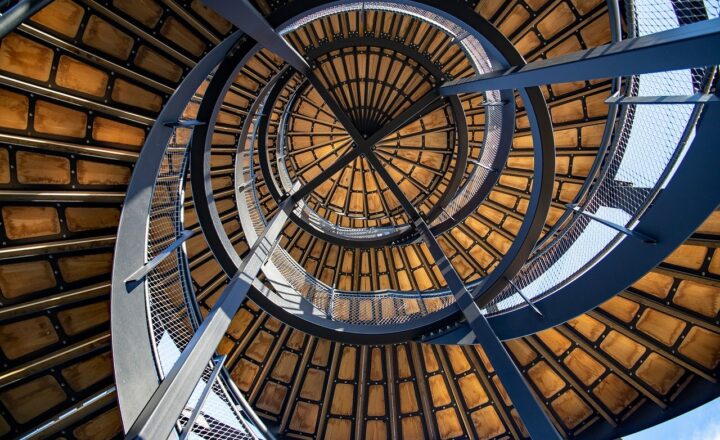How Homes Have Changed from Ancient Constructions to Modern Designs
November 15, 2024

The evolution of homes reflects the advancements in technology, social dynamics, and cultural practices across centuries. From ancient constructions that harnessed natural materials to modern designs characterized by innovation and sustainability, homes are more than just structures; they embody the changing lifestyles of humanity. This article explores how homes have transformed from ancient times to the present, showcasing key architectural styles, materials, and innovations that have shaped residential design.
1. Ancient Homes: A Reflection of Environment and Culture
Ancient homes were built with a deep understanding of the environment, often using readily available materials. These structures varied significantly based on geography and climate.
– Mudbrick Homes: In regions like Mesopotamia, mudbrick was a common material, ideal for hot and arid climates. These thick walls provided insulation from heat, showcasing an early understanding of energy efficiency.
– Stone Houses: In colder climates, such as Europe, homes were constructed from stone. The use of this durable material not only ensured safety against external threats but also provided excellent insulation.
– Tent and Nomadic Structures: For nomadic tribes, such as the Mongols, homes were portable, like yurts or tents made from animal skins. These structures catered to a lifestyle that demanded mobility and adaptability.
The materials used were a reflection of the available resources and the cultural practices of the time, leading to a diverse range of architectural forms across different civilizations.
2. The Influence of Architecture Through the Ages
As societies advanced, architectural styles began to emerge, heavily influenced by culture, religion, and socio-economic factors.
– Classical Architecture (Circa 500 BC – 500 AD): The Greeks and Romans honed their skills in mathematics and geometry, leading to the development of iconic architectural styles. Temples and public buildings featured columns and intricate designs whose principles continue to influence modern architecture.
– Gothic Architecture (12th – 16th Century): Characterized by tall structures, pointed arches, and ribbed vaults, Gothic architecture was primarily used in cathedrals and churches, emphasizing verticality and light.
– Renaissance and Baroque Styles (14th – 18th Century): This period ushered in more grandeur with opulent designs, heavy ornamentation, and complex forms, signaling wealth and power among patrons.
Each of these architectural styles demonstrated the changing aesthetics and technologies available at the time, setting the stage for modern designs.
3. The Industrial Revolution: A Paradigm Shift in Construction
The Industrial Revolution in the 18th century marked a dramatic transformation in home construction. New materials and manufacturing processes revolutionized the way homes were built.
– Use of Steel and Glass: The introduction of steel and glass allowed for larger spaces and more innovative designs. Large windows became common, flooding interiors with natural light.
– Standardization and Prefabrication: The development of prefabricated components made it possible to construct homes quickly and affordably. This led to the mass production of housing, particularly after World War II.
– Increased Use of Concrete: Concrete provided a durable, fire-resistant, and moisture-resistant option for building homes. Its versatility allowed for a variety of designs, from minimalist to complex forms.
The industrialization of housing set the foundation for the development of suburbs and urbanization, changing how families lived and interacted with their communities.
4. Modern Homes: Sustainability and Technology
In recent decades, the focus has shifted toward sustainability and smart technology in residential design, reflecting a growing awareness of environmental issues.
– Sustainable Materials: Modern homes increasingly utilize eco-friendly materials such as bamboo, recycled steel, and reclaimed wood, promoting energy efficiency and reducing the carbon footprint.
– Energy Efficiency: Features like solar panels, green roofs, and advanced insulation techniques help minimize energy consumption, responding to global concerns about energy use and climate change.
– Smart Homes: Technology now permeates home design, with systems for home automation, security, and energy management becoming commonplace. Voice-activated assistants, smart thermostats, and lighting systems offer convenience while enhancing energy efficiency.
The modern era of home design emphasizes the balance between comfort and sustainability, catering to a new generation of homeowners who are conscientious about environmental impacts.
5. The Future of Home Design: Trends to Watch
The future of home design promises exciting innovations, shaped by emerging technologies and changing societal needs.
– Modular and Micro Homes: As urban populations grow, there is an increasing demand for smaller, more efficient living spaces. Modular homes provide flexible options for growing families and are often easier to construct.
– Biophilic Design: The incorporation of nature into home design aims to enhance well-being, reconnecting individuals with their environment through natural light, green spaces, and organic materials.
– 3D-Printed Homes: This innovative approach to construction could dramatically reduce costs and construction time while bringing unique design possibilities.
Emerging trends reflect a focus on functionality, sustainability, and the well-being of occupants, paving the way for a new era in residential architecture.
Conclusion
The journey of home design from ancient constructions to modern innovations illustrates the dynamic relationship between architecture, technology, and human needs. As we advance into the future, it is evident that our living spaces will continue to evolve, driven by creativity and the desire for sustainable and functional homes. Each era has made valuable contributions to home design, reflecting not only the materials and technology of the time but also the cultural narratives and values that define us.
Whether we draw inspiration from classical designs or innovate with modern technology, the core purpose remains — to create spaces that promote comfort, connection, and well-being in our ever-changing world.







